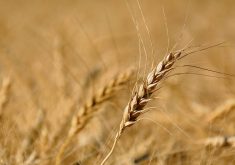MarketsFarm — A further tightening in Canada’s mustard supply is the main culprit in recent price spikes for the seed.
Yellow mustard in Western Canada has a high-delivered bid of $1.61/lb., up 10 cents from last month and $1.18 higher than last year, according to Prairie Ag Hotwire data.
Over the past month, the high-delivered bid for brown mustard went up 34 cents, to $1.85/lb. ($1.46 higher than last year), and Oriental mustard was up nine cents at $1.10/lb. (up 77 cents from a year ago).
Canada’s mustard production for 2021-22 was estimated at 50,000 tonnes by Statistics Canada, nearly half the production from the previous year, due to severe drought in the Prairies.
Read Also

Brazil to reap record soy crop in 2025/2026, increase exports
Brazil’s Conab said the country will reap a record soybean crop of 177.6 million tons in the 2025/2026 harvest year, according to data released on Thursday.
As a result, carry-out stocks are forecast to decline 88 per cent to only 5,000 tonnes, according to the latest estimates from Agriculture and Agri-Food Canada. Last December, Canada’s total mustard stock was only at 47,000 tonnes, according to Statistics Canada.
Walter Dyck, the Lethbridge-based general manager for Olds Products’ seed division, said despite lower supply, demand for mustard is constant.
“Mustard has very high inelastic demand. Although demand doesn’t change from one year to the next regardless of price, the customers need mustard. There is no substitute for mustard,” he said.
Canada, typically one of the world’s largest exporters of mustard seed, has enough mustard to satiate demand, he said. However, countries which purchase Canadian mustard are now looking elsewhere, such as the U.S., to increase their own supply.
“Those countries that import the mustard, they’re taking efforts to secure their requirements, and I think that will include buying from other mustard exporters,” he said.
Despite the tightening supply of mustard, Rick Mitzel, executive director for the Saskatchewan Mustard Development Commission (SaskMustard), believes the industry will be in good shape this marketing year due to rising prices. Most Canadian mustard seed is grown in the province.
“(The industry) is strong. We have a good group of loyal growers and that helps us,” he said. “I think this coming year we’ll see a few more acres go into mustard than there probably has been over the past two or three years. I think mustard will be quite profitable this coming year.”
Mitzel also gave a “conservative estimate” of 350,000 mustard seed acres in Saskatchewan this year and added that while yellow mustard is still predominantly what’s grown, demand for brown mustard is on the rise.
“Our brown mustard goes to Europe and our Oriental mustard goes over to Asia, generally speaking. It seems like the world demand for mustard has increased over the last five years. So we are trying to capture that demand with our Canadian product,” he said.
Dyck also agreed rising prices can lead to more mustard seed acres in Canada, but the crop still faces competition from other commodities with rising prices. He also warned buyers might choose to stay away from a scarce product such as Canadian mustard.
“I do see an increase in mustard acres in Canada, but not in a very large irrational way,” Dyck said. “(An increase) will be a lot more measured.”
Canadian farmers seeded 309,000 acres of mustard in 2021-22, with an early forecast from AAFC calling for planted area near 370,000 acres in 2022-23.
— Adam Peleshaty reports for MarketsFarm from Stonewall, Man.















